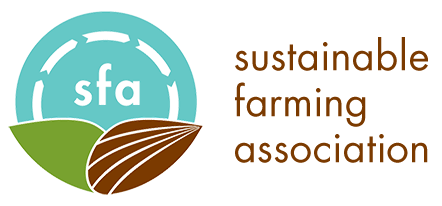Beyond Your Backyard: I’m Ready for Green Things
Photos above by Megan Benage, from left: Virginia bluebells growing in a woodland shade garden. Pasqueflower is one of the first prairie wildflowers to bloom, blooming around Easter; this Queen bumble bee ended up covered in pollen and ready to provision her nest. American plum is important for earth emerging pollinators like queen bumble bees. It also smells nice, too.
I spent my college years in Indiana and I always knew it was spring by the peepers calling, their loud, high-pitched trills exciting the marsh and letting everyone know life has awoken anew.
 In Minnesota, spring is a more subtle dance. The geese return, arcing quietly through the sky, their spring entrance often feels quieter than their noisy fall exit. As if they’re waiting to be found out as an unexpected surprise only after they touch down in a nearby wetland so when you round the bend there they are, just like that — home. The woodcocks peent and twirl through the sky impressing all the lady woodcocks with their bob and shuffle. Snow comes and disappears in the same week it fell and then winter laughs at the audacity of the month of April to call the flowers forward and sends more.
In Minnesota, spring is a more subtle dance. The geese return, arcing quietly through the sky, their spring entrance often feels quieter than their noisy fall exit. As if they’re waiting to be found out as an unexpected surprise only after they touch down in a nearby wetland so when you round the bend there they are, just like that — home. The woodcocks peent and twirl through the sky impressing all the lady woodcocks with their bob and shuffle. Snow comes and disappears in the same week it fell and then winter laughs at the audacity of the month of April to call the flowers forward and sends more.
While this dance is beautiful, I also get incredibly impatient. WHERE ARE THE GREEN THINGS?! I am ready for the browns and whites to explode in splashes of color, bright red maple and basswood buds along with purple tinged pasqueflower petals standing out against the muted backdrop. And still I want even more color! Tender bright green leaves unfurling and stretching into the sun with shoots of prairie emerging on hillsides to say hello to the open sky.
Because I’m impatient I need something to do while I wait for all of these changes to happen. Luckily, enter the Minnesota prairie. Native prairies have over 500 different kinds of plants. They are all uniquely beautiful and important and now, while we’re all waiting for the show, is the perfect time to plan your native garden or prairie reconstruction! Remember, diversity is the number one indicator of health in any system so try to choose lots of different kinds of native plants and group them in threes or fives if you want a more orderly garden. Or just throw caution to the wind and let nature surprise you by scattering a whole bunch of seeds and seeing what grows first. How many plants will you add that could help a hungry bee or butterfly?
The excitement at seeing color and smelling more smells than our senses can take in is right on the horizon!
#grownative #nativeplants
